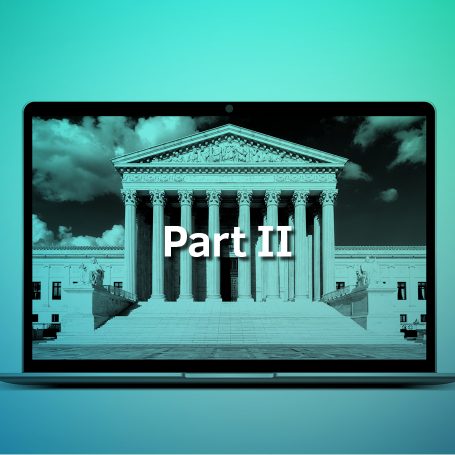Unusual Sources of Discoverable Data

The Courts and COVID-19: Effects on Constituents
June 16, 2020
With Remote the New Working Norm, What Does This Mean for the Litigation Cycle?
August 5, 2020
Collecting electronically stored information (ESI) is a routine
challenge for eDiscovery specialists, but one that’s becoming more and
more complex as our technology environment evolves. The inherent difficulties of traditional ESI
collection are compounded by the staggering amount of new and widely different technology
tools which must be accounted for during discovery. The process of defensibly
collecting information from these new sources is increasingly difficult for
attorneys, litigation support professionals, and forensic examiners. For
example, the differing methods of storage and retrieval capabilities within these
emerging technologies, along with the requirements for fundamental source
identification and preservation, all pose serious hurdles.
Litigation support professionals and forensic examiners must recognize the differences between data from traditional and nontraditional ESI sources during the discovery process. Data sources such as Microsoft Office and Lotus Notes incorporate well-established forensic collection tools, methodologies, and workflows for preservation and processing. But breakthrough and emerging technologies – think Slack, Microsoft Teams, Zoom, Yammer, social media platforms, smart glasses and other wearable technology – have fewer standard collection, preservation, and processing workflows. Added to this, new and informal methods of communication are more frequently employed within these new channels, with words replaced by photos, gifs, and emojis.
So what can be done?
Understand the Technology
Keeping abreast of the new technology is paramount. Companies need to make a practice of studying the numerous collaboration tools, messaging apps, and social media sites which its employees may be leveraging. IT professionals must work in concert with their Legal teams to better understand how the company can access and preserve data that its employees are creating with non-traditional technologies. Being prepared for and knowledgeable about these new tools will prevent potential headaches when discovery rolls around.
Develop a Policy
Legal departments are not always aware of every data source that employees may be using within their company. In many organizations it’s all too easy for employees to install unapproved applications which may be potentially relevant or “discoverable” downstream. An employee survey will help establish which communications channels are commonly used. Companies can then institute an IT policy which clearly lays out which apps can and cannot be installed on company-authorized devices. IT needs to enforce these policies to ensure that employees are not potentially exposing themselves, or the company, to unnecessary and burdensome discovery in the future.
Establish a Retention Protocol
Last, establishing a clearly defined data retention policy will be of particular import as new technologies emerge and are integrated into each company’s suite of acceptable software and apps. Legal departments must be cognizant of all technologies in use to ensure that the associated data is preserved from each relevant source, application, or technology. Preserving data will require that IT and Legal are able to actually find it, regardless of whether the data is located on servers, shared networks, or stored within the application’s cloud environment.
These steps will help streamline the eDiscovery process and lay the foundations for efficient, defensible and successful outcomes.
Litigation support professionals and forensic examiners must recognize the differences between data from traditional and nontraditional ESI sources during the discovery process. Data sources such as Microsoft Office and Lotus Notes incorporate well-established forensic collection tools, methodologies, and workflows for preservation and processing. But breakthrough and emerging technologies – think Slack, Microsoft Teams, Zoom, Yammer, social media platforms, smart glasses and other wearable technology – have fewer standard collection, preservation, and processing workflows. Added to this, new and informal methods of communication are more frequently employed within these new channels, with words replaced by photos, gifs, and emojis.
So what can be done?
Understand the Technology
Keeping abreast of the new technology is paramount. Companies need to make a practice of studying the numerous collaboration tools, messaging apps, and social media sites which its employees may be leveraging. IT professionals must work in concert with their Legal teams to better understand how the company can access and preserve data that its employees are creating with non-traditional technologies. Being prepared for and knowledgeable about these new tools will prevent potential headaches when discovery rolls around.
Develop a Policy
Legal departments are not always aware of every data source that employees may be using within their company. In many organizations it’s all too easy for employees to install unapproved applications which may be potentially relevant or “discoverable” downstream. An employee survey will help establish which communications channels are commonly used. Companies can then institute an IT policy which clearly lays out which apps can and cannot be installed on company-authorized devices. IT needs to enforce these policies to ensure that employees are not potentially exposing themselves, or the company, to unnecessary and burdensome discovery in the future.
Establish a Retention Protocol
Last, establishing a clearly defined data retention policy will be of particular import as new technologies emerge and are integrated into each company’s suite of acceptable software and apps. Legal departments must be cognizant of all technologies in use to ensure that the associated data is preserved from each relevant source, application, or technology. Preserving data will require that IT and Legal are able to actually find it, regardless of whether the data is located on servers, shared networks, or stored within the application’s cloud environment.
These steps will help streamline the eDiscovery process and lay the foundations for efficient, defensible and successful outcomes.



